 Por: Jackson T. Wright Jr., MD, PhD; Lawrence J. Fine, MD, DrPH; Daniel T. Lackland, PhD; Gbenga Ogedegbe, MD, MPH, MS; y Cheryl R. Dennison Himmelfarb, PhD, RN, ANP. Ann Intern Med. 14 January 2014 doi:10.7326/M13-2981.
Por: Jackson T. Wright Jr., MD, PhD; Lawrence J. Fine, MD, DrPH; Daniel T. Lackland, PhD; Gbenga Ogedegbe, MD, MPH, MS; y Cheryl R. Dennison Himmelfarb, PhD, RN, ANP. Ann Intern Med. 14 January 2014 doi:10.7326/M13-2981.
The “2014 Evidence-Based Guideline for the Management of High Blood Pressure In Adults: Report From the Panel Members Appointed to the Eighth Joint National Committee (JNC 8)” recommends several major changes from the JNC 7 report. The 2014 guideline is based on a systematic review of randomized, controlled trials (RCTs) by a multidisciplinary panel using a process informed by Institute of Medicine recommendations for guideline development. Although there was almost unanimous agreement on nearly all recommendations, a minority of the panel (the authors of this commentary) disagreed with the recommendation to increase the target systolic blood pressure (SBP) from 140 to 150 mm Hg in persons aged 60 years or older without diabetes mellitus (DM) or chronic kidney disease (CKD). This target guides both the initiation of therapy and treatment goals.
 Por: F D Fuchs y S C Fuchs. Journal of Human Hypertension (2014) 28, 80–84. ( 8 January 2014).
Por: F D Fuchs y S C Fuchs. Journal of Human Hypertension (2014) 28, 80–84. ( 8 January 2014).
The risk that lowering blood pressure (BP) excessively increases the incidence of cardiovascular disease—the J-shaped phenomenon—has been a matter of concern endorsed by many experts, particularly in patients with coronary heart disease and diabetes. The results of the Action to Control Cardiovascular Risk in Type 2 Diabetes (ACCORD) trial strengthened the idea that it may be futile to lower BP more intensively in patients with diabetes. Nevertheless, there seems to be no direct J-shaped relation between BP-lowering treatment and outcome.
Sex and Age Differences in the Relation of Depressive Symptoms With Blood Pressure
 Por: Mauli T. Shah, Alan B. Zonderman y Shari R. Waldstein. American Journal of Hypertension, Volume 26, Issue 12, Pp. 1413-1420.
Por: Mauli T. Shah, Alan B. Zonderman y Shari R. Waldstein. American Journal of Hypertension, Volume 26, Issue 12, Pp. 1413-1420.
Longitudinal associations between depressive symptoms and blood pressure have been inconsistent. Most studies have examined incident hypertension as an outcome, and few have examined effect modification.
Depression and depressive symptoms are established risk factors for cardiovascular disease (CVD),1 but the mechanisms underlying this relation are unclear. Hypertension may be a mechanism through which depressive symptoms influence CVD pathogenesis. Prior literature has identified inconsistent longitudinal associations between depressive symptoms and blood pressure (BP).
Results demonstrate sex and age differences in the relation between depressive symptoms and blood pressure. Findings suggest the potential importance of preventing, detecting, and lowering depressive symptoms to prevent hypertension among women and older adults.
 Por: Giuseppe Vittorio De Socio, Elena Ricci, Paolo Maggi, Giustino Parruti, Giacomo Pucci, Antonio Di Biagio, Leonardo Calza, Giancarlo Orofino, Laura Carenzi, Enisia Cecchini, Giordano Madeddu, Tiziana Quirino, Giuseppe Schillaci for the CISAI study group. American Journal of Hypertension, Volume 27 Issue 2, Pp. 222-228, February 2014.
Por: Giuseppe Vittorio De Socio, Elena Ricci, Paolo Maggi, Giustino Parruti, Giacomo Pucci, Antonio Di Biagio, Leonardo Calza, Giancarlo Orofino, Laura Carenzi, Enisia Cecchini, Giordano Madeddu, Tiziana Quirino, Giuseppe Schillaci for the CISAI study group. American Journal of Hypertension, Volume 27 Issue 2, Pp. 222-228, February 2014.
We aimed to assess the prevalence of hypertension in an unselected human immunodeficiency virus (HIV)–infected population and to identify factors associated with hypertension prevalence, treatment, and control. Atherosclerotic cardiovascular disease (CVD), a leading cause of morbidity and mortality in the general population, is an increasing concern for human immunodeficiency virus (HIV)–infected patients. HIV-infected individuals are exposed to accelerated vascular aging,1 and this issue has become even more relevant since antiretroviral therapy has impressively extended the life span of HIV-infected individuals.
Estudios importantes sobre hipertension arterial de Cuba y el mundo.
Apparent and true resistant hypertension: definition, prevalence and outcomes
 Por: E Judd y D A Calhoun. Journal of Human Hypertension 16 January 2014; doi: 10.1038/jhh.
Por: E Judd y D A Calhoun. Journal of Human Hypertension 16 January 2014; doi: 10.1038/jhh.
Resistant hypertension, defined as blood pressure (BP) remaining above goal despite the use of greater than or equal to3 antihypertensive medications at maximally tolerated doses (one ideally being a diuretic) or BP that requires greater than or equal to4 agents to achieve control, has received more attention with increased efforts to improve BP control rates and the emergence of device-based therapies for hypertension. This classically defined resistant group consists of patients with true resistant hypertension, controlled resistant hypertension and pseudo-resistant hypertension.


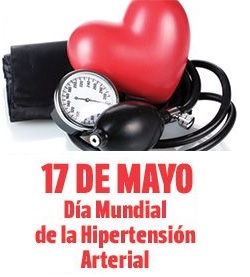
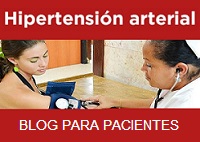


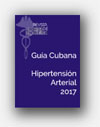
![Glosario: hipertensión [Hipertensión arterial en la atención primaria de salud. 2009]](http://temas.sld.cu/hipertension/files/2016/04/Glosario-e1541006177950.jpg)
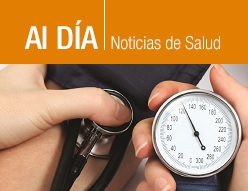
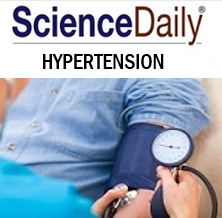

Comentarios recientes